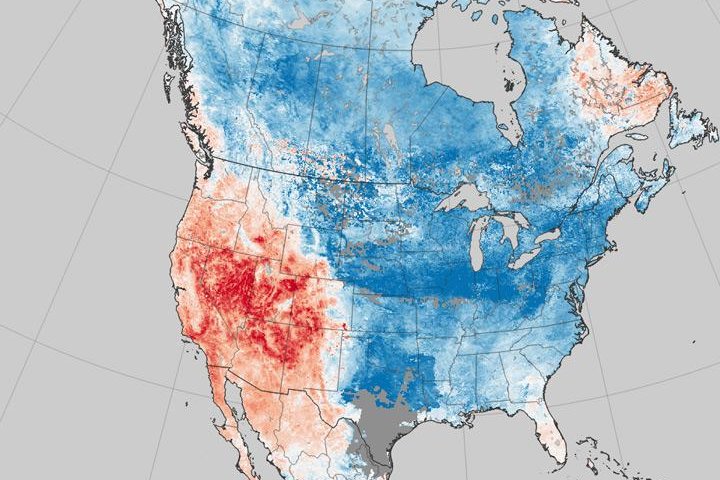begin quote from:
NASA map reveals a continent of two extremes -- temperature extremes
UPI.com · 22 hours ago
NASA map reveals a continent of two extremes -- temperature ...
https://www.upi.com/NASA-map-reveals-a-continent-of-two-extremes-temperature-ex...
22 hours ago - As evidenced by newly compiled NASA satellite data, North America is a continent divided -- a continent divided by temperature extremes.
NASA map reveals a continent of two extremes -- temperature extremes
www.lastminutestuff.com/.../NASA-map-reveals-a-continent-of-two-extremes-/46063...
NASA map reveals a continent of two extremes -- temperature extremes

NASA temperature data shows a hot and cold North America. Photo by NASA Earth Observatory/MODIS
Jan. 4 (UPI) -- As evidenced by newly
compiled NASA satellite data, North America is a continent divided -- a
continent divided by temperature extremes.
The new composite map was plotted using MODIS land surface temperature data collected between Dec. 26 and Jan. 2. The map shows frigid temperatures across the eastern half of North America, with unusually warm temperatures stretching across the West Coast and Southwest.
As NASA explains, the cold temperatures across the Midwest and East Coast are a global anomaly.
"December and January have been abnormally warm for most of the world," the space agency wrote in a news release. "People in California have been worrying about wildfires in what should be the wet season, and Alaskans are ice skating in T-shirts."
The east-west temperature divide is the result of the an atmospheric wave in the Jet Stream known as the Rossby wave. The wave's crest has dragged tropical air across the West Coast, while the trough has plunged a mass of Arctic air across much of Eastern U.S. and Canada.
Some climate models suggest warming in the Arctic and the resulting loss of sea ice will increase the prevalence of jet stream patterns like the one currently impacting North America.
"This particular year, we lost a lot of sea ice in the Pacific side of the Arctic Ocean," Jennifer Francis, research professor in the department of Marine and Coastal Sciences at Rutgers University, told IndyStar. "That, combined with the sea-surface temperature patterns in the Pacific, we think, is favoring what we call a ridge."
Even if global warming encourages new jet stream patterns, researchers say general warming trends will remain the reality for most of the planet. Summers will get hotter and winters milder. That doesn't mean there won't be any cold spells in the future, though.
The new composite map was plotted using MODIS land surface temperature data collected between Dec. 26 and Jan. 2. The map shows frigid temperatures across the eastern half of North America, with unusually warm temperatures stretching across the West Coast and Southwest.
"December and January have been abnormally warm for most of the world," the space agency wrote in a news release. "People in California have been worrying about wildfires in what should be the wet season, and Alaskans are ice skating in T-shirts."
The east-west temperature divide is the result of the an atmospheric wave in the Jet Stream known as the Rossby wave. The wave's crest has dragged tropical air across the West Coast, while the trough has plunged a mass of Arctic air across much of Eastern U.S. and Canada.
Some climate models suggest warming in the Arctic and the resulting loss of sea ice will increase the prevalence of jet stream patterns like the one currently impacting North America.
"This particular year, we lost a lot of sea ice in the Pacific side of the Arctic Ocean," Jennifer Francis, research professor in the department of Marine and Coastal Sciences at Rutgers University, told IndyStar. "That, combined with the sea-surface temperature patterns in the Pacific, we think, is favoring what we call a ridge."
Even if global warming encourages new jet stream patterns, researchers say general warming trends will remain the reality for most of the planet. Summers will get hotter and winters milder. That doesn't mean there won't be any cold spells in the future, though.

No comments:
Post a Comment